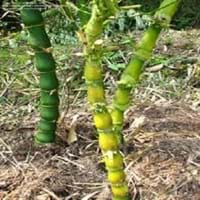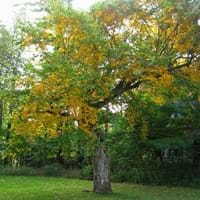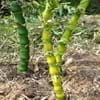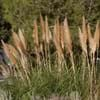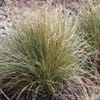Life Span
Perennial
Perennial
Origin
China, Japan
Northeastern United States, Mid-Atlantic United States, North-Central United States, Central United States, Canada
Types
Slender Weavers Bamboo, Golden Buddha's Belly Bamboo, Painted Bamboo
it is a type of birch
Habitat
Subtropical climates, Subtropical forests
Hillside, Mountain tops
USDA Hardiness Zone
9-11
4-7
Sunset Zone
H1, 18, 19, 20, 21, 22, 23, 24
A3, 1a, 1b, 2a, 2b, 3a, 3b, 4, 5, 6, 7, 14, 15, 16
Habit
Clump-Forming
Pyramidal
Flower Color
Red
Light Yellow, Light Green
Flower Color Modifier
Bicolor
Bicolor
Fruit Color
Brown
Bronze, Sandy Brown
Leaf Color in Spring
Dark Green
Green, Dark Green
Leaf Color in Summer
Light Green
Dark Green
Leaf Color in Fall
Dark Green
Yellow
Leaf Color in Winter
Dark Green
Not Available
Plant Season
Spring, Summer, Fall, Winter
Spring, Summer, Fall, Winter
Sunlight
Full Sun, Partial Sun, Partial shade
Full Sun, Partial Sun
Type of Soil
Clay, Loam, Sand
Clay, Loam
The pH of Soil
Acidic, Neutral, Alkaline
Acidic, Neutral
Soil Drainage
Average
Average
Bloom Time
Not Available
Early Spring
Tolerances
Not Available
Not Available
Where to Plant?
Container, Ground
Ground
How to Plant?
Divison
Seedlings
Plant Maintenance
Medium
Medium
Watering Requirements
Allow to dry out slightly between watering, Needs 2-3 times watering per week, Requires watering in the growing season, Water Deeply, Water when soil is dry
Average Water Needs, Do Not over Water
In Summer
Lots of watering
Lots of watering
In Spring
Moderate
Moderate
In Winter
Less Watering
Average Water
Soil pH
Acidic, Neutral, Alkaline
Acidic, Neutral
Soil Type
Clay, Loam, Sand
Clay, Loam
Soil Drainage Capacity
Average
Average
Sun Exposure
Full Sun, Partial Sun, Partial shade
Full Sun, Partial Sun
Pruning
Cut the culms, Remove damaged leaves, Remove dead branches, Remove dead leaves, Remove dead or diseased plant parts
Prune to half of its height
Fertilizers
All-Purpose Liquid Fertilizer, fertilize in growing season
All-Purpose Liquid Fertilizer, fertilize twice a year
Pests and Diseases
Red blotch
Borers, Chlorosis
Plant Tolerance
Not Available
Not Available
Flowers
None
Insignificant
Flower Petal Number
Single
Not Available
Fragrant Bark/Stem
No
Yes
Foliage Texture
Medium
Medium
Foliage Sheen
Matte
Matte
Attracts
Butterflies, Mites
Not Available
Allergy
Pollen, Rash
Respiratory problems, Skin rash
Aesthetic Uses
Bonsai
Landscape Designing, Showy Purposes
Beauty Benefits
Good for skin and hair, Not Available
Not Available
Environmental Uses
Air purification
Air purification, Shelter for wildlife
Medicinal Uses
Healthy teeth, Pain in gums
No Medicinal Use
Part of Plant Used
Sap, Stem
Bark, Sap
Other Uses
Container, Espalier, Screen, Used in paper industry
Edible syrup, used for making charcoal, Used for making wood alcohol, Used in Furniture
Used As Indoor Plant
Insignificant
No
Used As Outdoor Plant
Yes
Yes
Garden Design
Container, Feature Plant, Screening / Wind Break, Topiary / Bonsai / Espalier, Tropical
Feature Plant, Shade Trees
Botanical Name
BAMBUSA ventricosa
BETULA alleghaniensis
Common Name
Buddha's Belly Bamboo, Clumping Bamboo, Ventricose Bamboo
Yellow Birch
In Hindi
बुद्ध के पेट बांस
Yellow Birch
In German
Buddhas Bauch Bambus
Yellow Birch
In French
Le Bamboo Belly de Bouddha
bouleau jaune
In Spanish
De bambú del vientre de Buda
Abedul amarillo
In Greek
Κοιλιά Μπαμπού Βούδα
κίτρινο Birch
In Portuguese
Bamboo barriga de Buda
κίτρινο Birch
In Polish
Buddy Belly Bamboo
żółte brzozy
In Latin
Buddha ventre Bamboo
Birch flavum
Phylum
Magnoliophyta
Magnoliophyta
Class
Liliopsida
Magnoliopsida
Family
Poaceae
Betulaceae
Clade
Angiosperms, Commelinids, Monocots
Not Available
Tribe
Bambuseae
Not Available
Subfamily
Bambusoideae
Not Available
Number of Species
Not Available
Not Available
Importance of Buddha's Belly Bamboo and Yellow Birch
Want to have the most appropriate plant for your garden? You might want to know the importance of Buddha's Belly Bamboo and Yellow Birch. Basically, these two plants vary in many aspects. Compare Buddha's Belly Bamboo and Yellow Birch as they differ in many characteristics such as their life, care, benefits, facts, etc. Every gardener must at least have the slightest clue about the plants he wants to plant in his garden. Compare their benefits, which differ in many ways like facts and uses. The medicinal use of Buddha's Belly Bamboo is Healthy teeth and Pain in gums whereas of Yellow Birch is No Medicinal Use. Buddha's Belly Bamboo has beauty benefits as follows: Good for skin and hair and Not Available while Yellow Birch has beauty benefits as follows: Good for skin and hair and Not Available.
Compare Facts of Buddha's Belly Bamboo vs Yellow Birch
How to choose the best garden plant for your garden depending upon its facts? Here garden plant comparison will help you to solve this query. Compare the facts of Buddha's Belly Bamboo vs Yellow Birch and know which one to choose. As garden plants have benefits and other uses, allergy is also a major drawback of plants for some people. Allergic reactions of Buddha's Belly Bamboo are Pollen and Rash whereas of Yellow Birch have Respiratory problems and Skin rash respectively. Having a fruit bearing plant in your garden can be a plus point of your garden. Buddha's Belly Bamboo has no showy fruits and Yellow Birch has no showy fruits. Also Buddha's Belly Bamboo is not flowering and Yellow Birch is not flowering . You can compare Buddha's Belly Bamboo and Yellow Birch facts and facts of other plants too.
